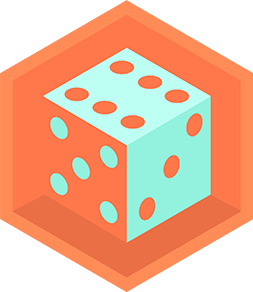Design Pizzas on Scratch
Create an interactive pizza design game using Scratch, adding toppings, sizes, and simple code to serve virtual customers while learning programming basics.



Step-by-step guide to Design Pizzas on Scratch
Step 1
Open Scratch and start a new project so you have a blank stage to build your game.
Step 2
Delete the default cat sprite to clear the stage and make room for your pizza game.
Step 3
Create a pizza base sprite in the Paint Editor and name the sprite "PizzaBase".
Step 4
In the PizzaBase sprite make three costumes named Small Medium Large by duplicating and resizing the base to three different sizes.
Step 5
Create at least three topping sprites (for example pepperoni mushroom olive) using the Paint Editor and name each topping sprite.
Step 6
Program each topping to be draggable: add code so when green flag clicked it remembers its home position and when the topping is clicked it follows the mouse until released.
Step 7
Add to each topping this single extra rule: after you release it if it is touching PizzaBase then stay where it landed else glide back to its remembered home position.
Step 8
Make three small button sprites labeled S M L and add code to each button so when clicked it broadcasts the messages "Small" "Medium" or "Large" respectively.
Step 9
In the PizzaBase sprite add code so when it receives "Small" "Medium" or "Large" it switches to the matching costume.
Step 10
Make a variable called Score and set Score to 0 when the green flag is clicked so you can keep track of correct orders.
Step 11
Create a Customer sprite that chooses a random size and a random topping when it receives a "new order" message then shows the order by saying the size and topping and storing them in order variables.
Step 12
Make a Serve button and add code so when clicked it checks PizzaBase's costume and whether the requested topping is touching PizzaBase then updates Score and tells the player Correct or Try again and broadcasts "new order" to continue.
Step 13
Share your finished interactive pizza design game on DIY.org so others can see and play your creation.
Final steps
You're almost there! Complete all the steps, bring your creation to life, post it, and conquer the challenge!


Help!?
I don't have a DIY.org account — where else can I share the finished interactive pizza design game?
Share your finished interactive pizza design game on the Scratch website by uploading the .sb3 project file or posting the project link instead of using DIY.org.
Why do my toppings always glide back to the wrong spot after release?
Make each topping set variables like HomeX and HomeY to its x and y positions when the green flag is clicked and then use those HomeX/HomeY values in the glide-back block so the sprite returns to its remembered home position.
How can I adapt this pizza game for different age groups?
For younger children remove the Serve button and Score and let them freely drag toppings onto the PizzaBase costumes; for elementary-age kids keep draggable toppings, the S/M/L size buttons, and the Serve check; and for older kids add a timer, a list for order history, and multi-topping orders with varied scoring.
How can we enhance or personalize the pizza game beyond the basic instructions?
Add sound effects and an animation when the Serve button shows 'Correct', create extra PizzaBase costumes or more topping sprites, let the Customer request two toppings and give bonus points to the Score variable, and allow players to customize the background and share their version.
Watch videos on how to design pizzas on Scratch
Kids Make Pizza in 30 Seconds?! Try This Easy Recipe!
Facts about Scratch programming for kids
🍕 Americans eat about 3 billion pizzas every year — that's a lot of slices to serve in your game!
🧩 Block-based (visual) coding works like snapping puzzle pieces together, which makes programming easier for beginners.
🎮 Building a Scratch game helps you learn core programming ideas like loops, events, and variables while having fun.
🐱 Scratch was created at the MIT Media Lab and first released in 2007 — its mascot is a friendly cat!
🔢 With 10 different pizza toppings you can create 2^10 = 1,024 unique topping combinations — math + creativity!
How do I create an interactive pizza design game on Scratch that lets players add toppings and serve customers?
What materials do I need to build a pizza design project in Scratch?
What ages is a Scratch pizza design activity suitable for?
What are the benefits of making a pizza design game on Scratch?


One subscription, many ways to play and learn.
Only $6.99 after trial. No credit card required


